Raye Chen-Hua Yeow
Formation Control of Multi-agent System with Local Interaction and Artificial Potential Field
Mar 15, 2025



Abstract:A novel local interaction control method (LICM) is proposed in this paper to realize the formation control of multi-agent system (MAS). A local interaction leader follower (LILF) structure is provided by coupling the advantages of information consensus and leader follower frame, the agents can obtain the state information of the leader by interacting with their neighbours, which will reduce the communication overhead of the system and the dependence on a single node of the topology. In addition, the artificial potential field (APF) method is introduced to achieve obstacle avoidance and collision avoidance between agents. Inspired by the stress response of animals, a stress response mechanism-artificial potential field (SRM-APF) is proposed, which will be triggered when the local minimum problem of APF occurs. Ultimately, the simulation experiments of three formation shapes, including triangular formation, square formation and hexagonal formation, validate the effectiveness of the proposed method.
A Novel Kinesthetic Haptic Feedback Device Driven by Soft Electrohydraulic Actuators
Nov 27, 2024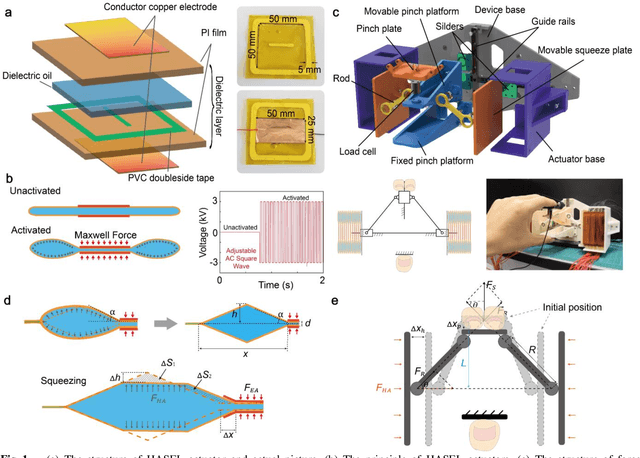
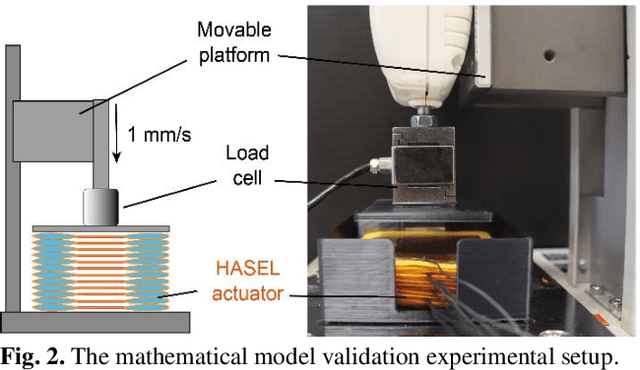
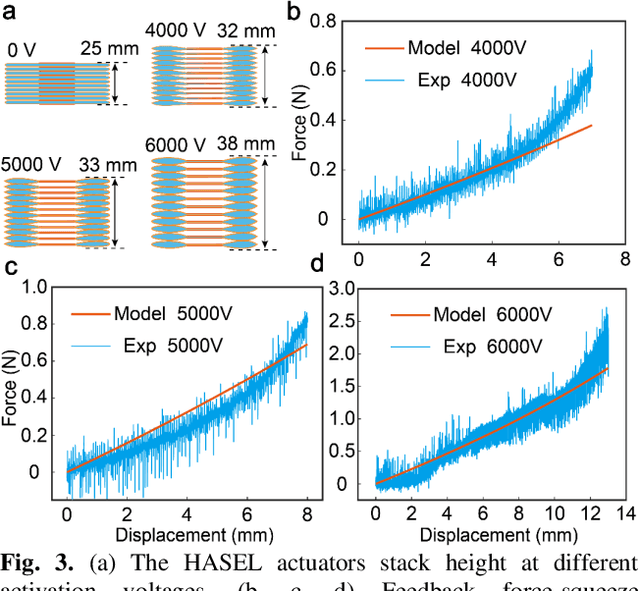
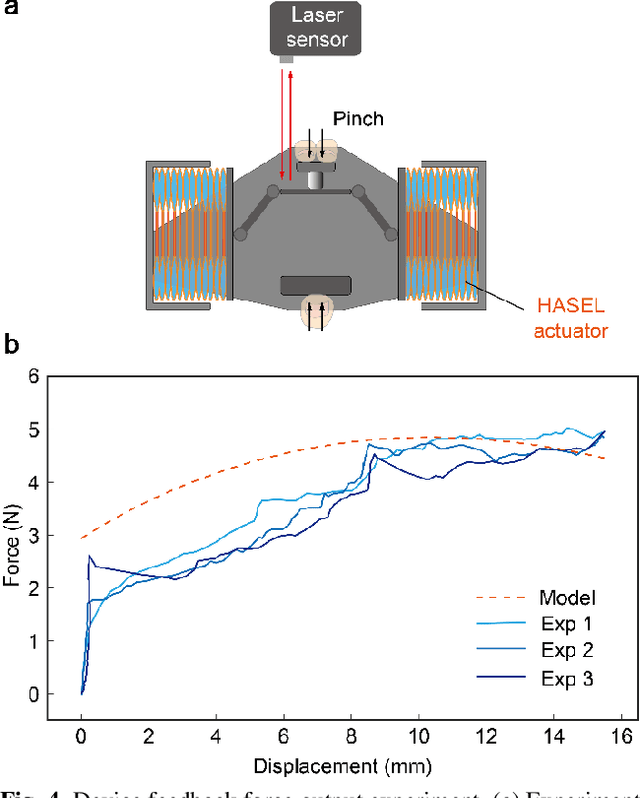
Abstract:Developing kinesthetic haptic devices with advanced haptic rendering capabilities is challenging due to the limitations on driving mechanisms. In this study, we introduce a novel soft electrohydraulic actuator and develop a kinesthetic haptic device utilizing it as the driving unit. We established a mathematical model and conducted testing experiments to demonstrate the device's ability to stably output controllable feedback force. Our experiments also demonstrates that this device exhibits fast response characteristics. By utilizing the easily controllable nature of the soft electrohydraulic actuator, we were able to achieve high-resolution controllable feedback force output. Furthermore, by modulating the waveform of the driving high voltage, the device acquired the capability to render variable frequency haptic vibration without adding any extra vibration actuator. Using this kinesthetic haptic device, we built a teleoperated robotic system, showcasing the device's potential application as a haptic force feedback system in the field of robotics.
Creation of Novel Soft Robot Designs using Generative AI
May 03, 2024Abstract:Soft robotics has emerged as a promising field with the potential to revolutionize industries such as healthcare and manufacturing. However, designing effective soft robots presents challenges, particularly in managing the complex interplay of material properties, structural design, and control strategies. Traditional design methods are often time-consuming and may not yield optimal designs. In this paper, we explore the use of generative AI to create 3D models of soft actuators. We create a dataset of over 70 text-shape pairings of soft pneumatic robot actuator designs, and adapt a latent diffusion model (SDFusion) to learn the data distribution and generate novel designs from it. By employing transfer learning and data augmentation techniques, we significantly improve the performance of the diffusion model. These findings highlight the potential of generative AI in designing complex soft robotic systems, paving the way for future advancements in the field.
AC-Driven Series Elastic Electrohydraulic Actuator for Stable and Smooth Displacement Output
Jan 25, 2024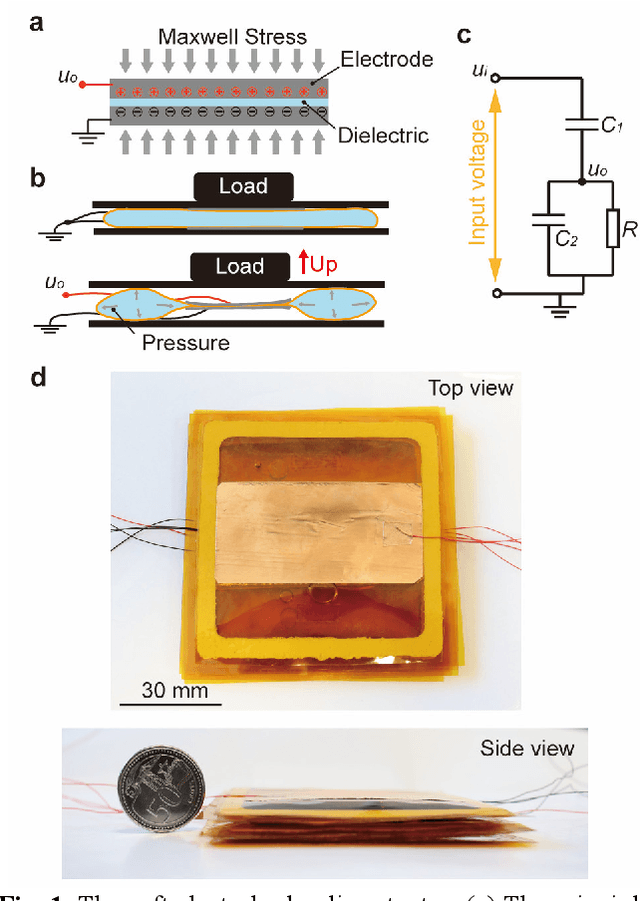
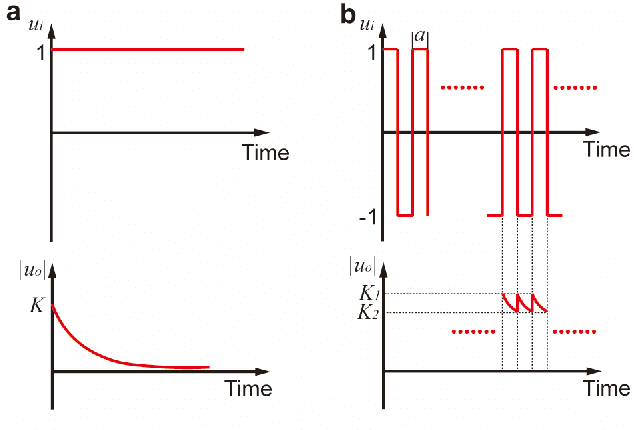
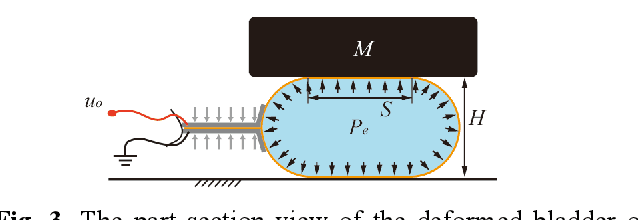
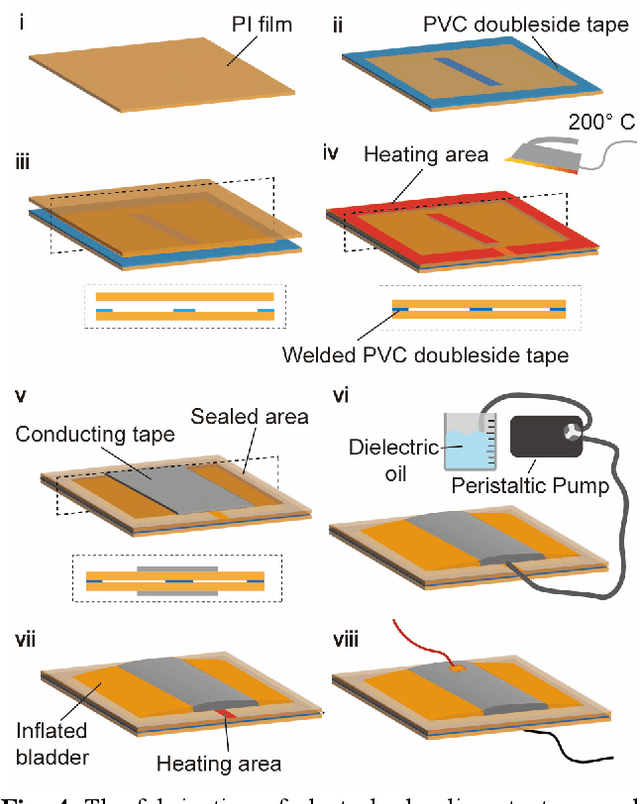
Abstract:Soft electrohydraulic actuators known as HASEL actuators have attracted widespread research interest due to their outstanding dynamic performance and high output power. However, the displacement of electrohydraulic actuators usually declines with time under constant DC voltage, which hampers its prospective application. A mathematical model is firstly established to not only explain the decrease in displacement under DC voltage but also predict the relatively stable displacement with oscillation under AC square wave voltage. The mathematical model is validated since the actual displacement confirms the trend observed by our model. To smooth the displacement oscillation introduced by AC voltage, a serial elastic component is incorporated to form a SE-HASEL actuator. A feedback control with a proportion-integration algorithm enables the SE-HASEL actuator to eliminate the obstinate displacement hysteresis. Our results revealed that, through our methodology, the SE-HASEL actuator can give stable and smooth displacement and is capable of absorbing external impact disturbance simultaneously. A rotary joint based on the SE-HASEL actuator is developed to reflect its possibility to generate a common rotary motion for wide robotic applications. More importantly, this paper also proposes a highly accurate needle biopsy robot that can be utilized in MRI-guide surgical procedures. Overall, we have achieved AC-driven series elastic electrohydraulic actuators that can exhibit stable and smooth displacement output.
PoseAction: Action Recognition for Patients in the Ward using Deep Learning Approaches
Oct 05, 2023Abstract:Real-time intelligent detection and prediction of subjects' behavior particularly their movements or actions is critical in the ward. This approach offers the advantage of reducing in-hospital care costs and improving the efficiency of healthcare workers, which is especially true for scenarios at night or during peak admission periods. Therefore, in this work, we propose using computer vision (CV) and deep learning (DL) methods for detecting subjects and recognizing their actions. We utilize OpenPose as an accurate subject detector for recognizing the positions of human subjects in the video stream. Additionally, we employ AlphAction's Asynchronous Interaction Aggregation (AIA) network to predict the actions of detected subjects. This integrated model, referred to as PoseAction, is proposed. At the same time, the proposed model is further trained to predict 12 common actions in ward areas, such as staggering, chest pain, and falling down, using medical-related video clips from the NTU RGB+D and NTU RGB+D 120 datasets. The results demonstrate that PoseAction achieves the highest classification mAP of 98.72% (IoU@0.5). Additionally, this study develops an online real-time mode for action recognition, which strongly supports the clinical translation of PoseAction. Furthermore, using OpenPose's function for recognizing face key points, we also implement face blurring, which is a practical solution to address the privacy protection concerns of patients and healthcare workers. Nevertheless, the training data for PoseAction is currently limited, particularly in terms of label diversity. Consequently, the subsequent step involves utilizing a more diverse dataset (including general actions) to train the model's parameters for improved generalization.
An Amphibious Fully-Soft Miniature Crawling Robot Powered by Electrohydraulic Fluid Kinetic Energy
Sep 20, 2023Abstract:Miniature locomotion robots with the ability to navigate confined environments show great promise for a wide range of tasks, including search and rescue operations. Soft miniature locomotion robots, as a burgeoning field, have attracted significant research interest due to their exceptional terrain adaptability and safety features. In this paper, we introduce a fully-soft miniature crawling robot directly powered by fluid kinetic energy generated by an electrohydraulic actuator. Through optimization of the operating voltage and design parameters, the crawling velocity of the robot is dramatically enhanced, reaching 16 mm/s. The optimized robot weighs 6.3 g and measures 5 cm in length, 5 cm in width, and 6 mm in height. By combining two robots in parallel, the robot can achieve a turning rate of approximately 3 degrees/s. Additionally, by reconfiguring the distribution of electrodes in the electrohydraulic actuator, the robot can achieve 2 degrees-of-freedom translational motion, improving its maneuverability in narrow spaces. Finally, we demonstrate the use of a soft water-proof skin for underwater locomotion and actuation. In comparison with other soft miniature crawling robots, our robot with full softness can achieve relatively high crawling velocity as well as increased robustness and recovery.
 Add to Chrome
Add to Chrome Add to Firefox
Add to Firefox Add to Edge
Add to Edge